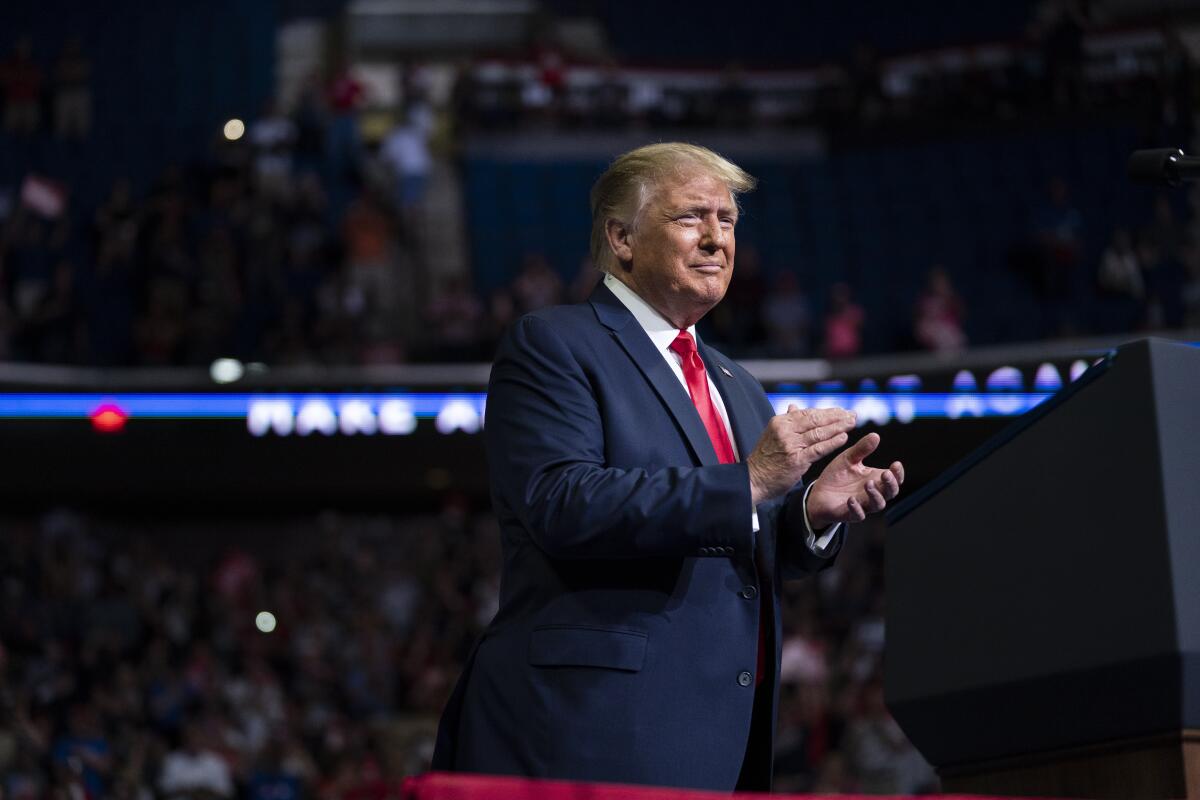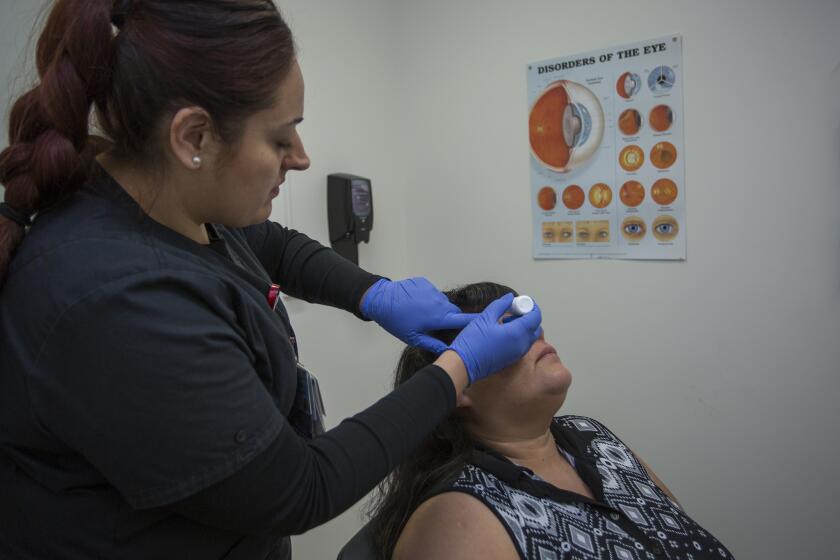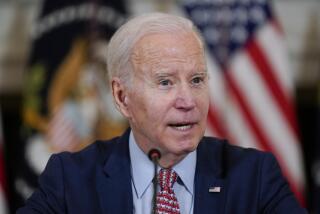Trump administration has considered ending coronavirus emergency, even as cases surge

- Share via
WASHINGTON — The Trump administration, eager to claim victory over the coronavirus, has been considering scaling back the national emergency declared earlier this year to control the pandemic, according to healthcare industry officials who have spoken with the administration.
The prospect has stoked alarm among public health leaders, physicians, hospital officials and others who are trying to control the outbreak and fear that such a move would make it more difficult for state and local governments and health systems to keep the coronavirus in check.
Pressed on the issue Tuesday, White House press secretary Kayleigh McEnany told the Los Angeles Times that no such move was imminent.
“I just spoke with the president,” she said, “and he said we are not looking at lifting the national emergency declarations.”
But White House officials have a history of contradicting themselves, most recently on Monday when McEnany claimed President Trump was joking over the weekend when he said he’d directed aides to slow coronavirus testing. Trump said Tuesday it wasn’t a joke.
Several industry officials interviewed by The Times said they’d received indications over the last week from the Trump administration that lifting emergency declarations was being considered.
“It was very much under discussion,” said one industry official, who asked not to be identified to avoid jeopardizing relationships with the administration.
The discussions have taken place as hospitalizations and caseloads have begun to climb rapidly in several large states that moved early to lift restrictions on businesses, an increase that could make it more difficult for the administration to end the emergency declarations.
Healthcare leaders said they’d been mystified by the administration’s unwillingness to publicly commit to an extension of the emergency declarations, one of which is scheduled to expire next month.
“It’s the silence that worries us,” said Meg Murray, chief executive of the Assn. for Community Affiliated Plans, which represents nonprofit health insurers, many of whose customers are overwhelmingly low-income. “If they were seeing the world the way we are, we’d expect them to be more clear.”
“I know the administration is trying to pretend that this is over, but it’s clearly not,” said Dr. Georges Benjamin, the longtime head of the American Public Health Assn. “Many governors are still struggling to figure out what they need to do, particularly in those states where they are beginning to realize they have emergencies. … We need the flexibility that emergency declarations provide.”
The emergency declarations the administration has issued since the beginning of the year have loosened or waived rules and regulations on hospitals and other medical providers and helped route badly needed money to states.
A dramatic expansion of tele-health, for example, has been smoothed by an emergency declaration allowing Medicare and commercial health plans to reimburse clinics and hospitals for telephone and internet visits. That’s made it possible for patients to see their doctors without going to an office.
Similarly, hospitals have been able to quickly hire more staff, sometimes from other states, and to add beds without going through a lengthy permitting process.
Clinics that get paid if patients stay healthy are surviving while many other medical practices suffer. They may represent the future of medical care.
Emergency declarations also have freed additional Medicaid money for states and made it easier to ensure that people who rely on Medicaid won’t lose coverage during the economic downturn.
California received a waiver from the federal government to allow patients on its Medicaid program to more quickly receive mental health and substance abuse treatment via tele-health.
“People may be unaware of how important these declarations are to the ability of the healthcare system to address coronavirus,” said Carmela Coyle, president of the California Hospital Assn., many of whose members have been scrambling to keep California’s outbreak in check.
California is among more than two dozen states where the number of coronavirus cases is now rising, according to data assembled by the Coronavirus Resource Center at Johns Hopkins University.
Increases in some states may largely reflect more testing, which health officials say they believe is the case in California. Many states, including Texas and Florida, are also recording a sharp increase in hospitalizations, indicating that serious cases are on the rise.
Now, public health experts fear that deaths may soon begin to rise again after a months-long decline. COVID-19, the disease caused by the virus, has killed more than 120,000 Americans.
Despite the worrying numbers, Trump has been downplaying the threat for weeks as the cost of the economic slowdown has become increasingly acute.
The president dramatically scaled back the work schedule of the White House coronavirus task force and ended daily briefings by the group, including its leading scientists. He has urged a swift return to normal, celebrating moves by states to relax restrictions.
Trump also continues to argue that the increasing number of cases is being driven entirely by more testing, an idea widely dismissed by public health experts.
Declaring an end to the national emergency may bolster the president’s claim that the country is returning to normal.
One of the declarations — a public health emergency issued by the Department of Health and Human Services in January and renewed in April — is set to expire in late July unless the agency renews it.
A spokesperson for the health agency wouldn’t discuss the declaration on the record but in a statement said: “At this time, HHS expects to renew the Public Health Emergency due to COVID-19 before it expires. We have already renewed this PHE once.”
Hospital, health plan and public health officials say that renewal is important. But they caution that it is equally important to ensure the president does not end related national emergency declarations that he made in March.
These additional declarations — one called a national emergency declaration and one called a Stafford Act declaration — are also critical to sustaining the health system response, they say.
“The key waivers and increased access to many critical supplies depend on these declarations being in force,” said Chip Kahn, head of the Federation of American Hospitals. “It’s unfathomable to me that they would drop any of them.”
Trump was reluctant to issue the additional national emergency declarations in March, as he worked at the time to downplay the severity of the coronavirus outbreak.
The delay prevented states from fully leveraging their Medicaid programs, stoking rising cries from state leaders for White House action.
Times Staff Writer Eli Stokols contributed to this report from Washington.
More to Read
Get the L.A. Times Politics newsletter
Deeply reported insights into legislation, politics and policy from Sacramento, Washington and beyond. In your inbox three times per week.
You may occasionally receive promotional content from the Los Angeles Times.












